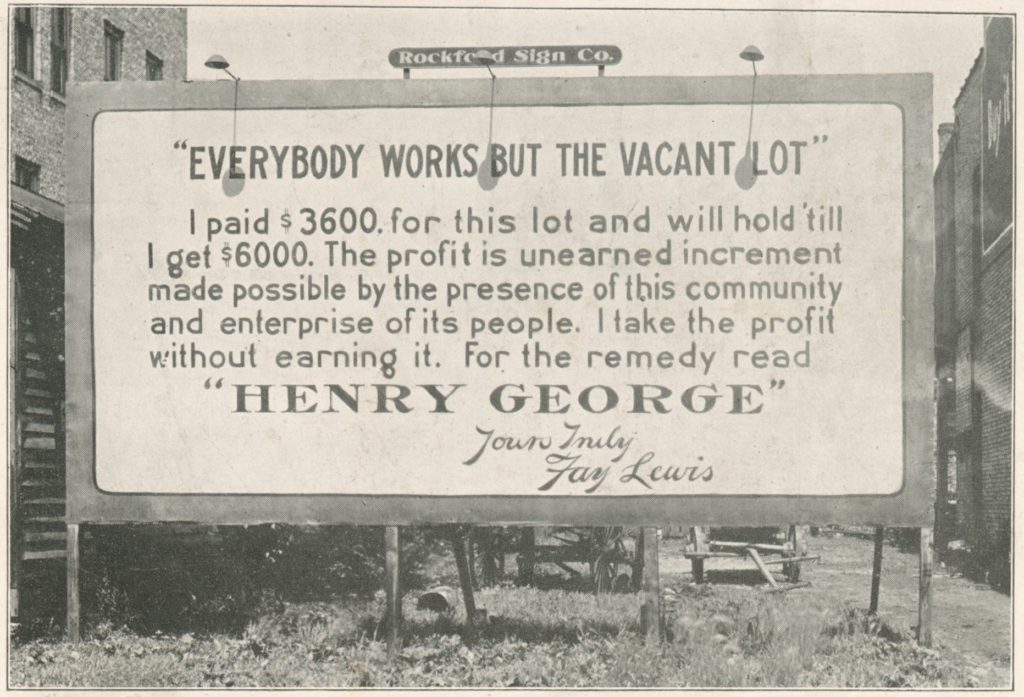Fact-Checking the SD 33 Candidates: Gonzalez Gives Bloated Affordable Housing Numbers, Guerrero Plays Fast and Loose with LAUSD Spending
19 minute readTuesday is election day for most of Long Beach. A special election is being held to replace Democrat Ricardo Lara’s seat in State Senate District 33, which encompasses many of the Gateway Cities up and down the 710 Freeway. Lara was elected State Insurance Commissioner in November, leaving the seat vacant.
Democratic candidate Lena Gonzalez, a Long Beach City Councilmember, is hoping to relocate to Sacramento, but she’ll first have to beat Cudahy City Councilmember Jack Guerrero, a Republican. Gonzalez placed first in a crowded primary but fell short of winning the seat outright by roughly 20 percent. She’s going into election day looking good, having out-fundraised Guerrero 27 to 1 and with a party registration lead of around 43 percent. A shrewd political observer might say Gonzalez has this thing is in the bag … but you never know.
The only forum held during the runoff campaign was on May 6 at Veterans Park in Long Beach hosted by the Wrigley Association. The crowd was largely divided among party lines with cheers and jeers erupting as the two candidates doled out partisan red meat.
The candidates largely stayed away from personal attacks, though a few mentions were made about the candidates’ more questionable campaign donors. Gonzalez’s candidacy is being buttressed by an independent expenditure funded by big oil companies like Tesoro, Valero, and Chevron to the tune of over a $1 million. She commented on criticism she’s received for that support: “Five people on social media like to be very loud and chastise me.”
On the other end, Guerrero was criticized by Gonzalez about a $4,200 donation he received from a Los Angeles scrap metal recycling company located just outside the senate district’s boundaries.
In one notably odd moment, Guerrero also pointed out that legislators should be more concerned with the “academic disciplines” rather than the “over-sexualization of kindergartners,” an apparent reference to bathroom facilities being made available for transgender youth.
We took a look at some of the claims made by the candidates at the forum and did our best to provide fact-checking and sourcing. Candidate statements were rated as either true, mostly true, could not be verified, mostly false, and false.
You can find your polling location here. Happy voting!
Lena Gonzalez: Right now, we spent only $11,000 per student where we spent $70,000 per prisoner in private prisons currently, in the State of California.
Jack Guerrero: California actually has higher per pupil spending than the average for the country. We allocate more to education than most states.
Education spending was a major point of contention during the forum. Gonzalez claimed that California’s spending in that category has been outpaced by other states. Guerrero rebutted that we actually spend more per pupil than most states and instead need better accountability. Who’s right? Depends on how you look at it.
The student-versus-prisoner spending talking point from Gonzalez has become such a common refrain for state Democrats—including gubernatorial hopeful Delaine Eastin and most recently Governor Gavin Newsom—that it has already been fact-checked by the Sacramento Bee and Politifact.
Determining per pupil spending can be tricky and can really come down to what yardstick is being used. A study done by the California Budget and Policy Center found that California schools spent $10,291 per K-12 student in the 2015-16 school year, which was about $1,900 less than the national average. A report from the education publication EdWeek concluded similarly. Both findings were adjusted for cost of living.
Alternatively, the National Education Association’s annual state rankings use a straight spending-to-spending comparison. Their estimates for the 2018-19 school year found that California’s per-pupil spending will eclipse the national average, but only by about $500, which supports Guerrero’s claim.
The $70,000 per inmate spending figure Gonzalez cited probably relates to an Associated Press report that came out in 2017, which found California spends $75,560 per inmate housed in its correctional facilities. Increases in per inmate spending were largely contributed to by a decrease in the number of inmates and an increase in spending for prison employee pensions.
We found both statements to be mostly true.
LG: [Charter schools] don’t even give the opportunity for special needs students to go to their schools and that is unfortunate.
That’s quite a sweeping claim, but there is some data to show things may not be completely above board in charter school land.
Exclusion of students with special needs is a point of serious debate between the pro- and anti-charter school camps. While there are both federal and state prohibitions on charter schools denying admission to students based on disability, some studies have found that these laws are being flouted.
A 2016 report by the American Civil Liberties Union Foundation of Southern California and the public interest law firm Public Advocates found that over one in five charter schools had restrictive admissions requirements or other exclusionary practices that can keep out students with the greatest academic needs.
These schools had admission requirements posted on their websites—such as requiring English proficiency, proof of citizenship before enrollment, and denying students with poor grades or test scores—that are explicitly prohibited by the California Charter Schools Act.
The California Charter Schools Association, an organization that advocates for charter schools, released a statement following publication of the report and offered this qualified agreement with its findings:
“Charter schools must be open to any student interested in attending … While we do not agree with the ACLU or Public Advocates that all essays, interviews and requests for student documentation for enrollment are per se discriminatory or exclusionary, CCSA will encourage our members to revise the language of their policies concerning essays and interviews, and to better describe the options available to families for enrollment documentation to ensure that there is not even a perception of bias or discrimination in admissions and enrollment processes.”
Newsom weighed in on the topic earlier this month in his revised budget by proposing tighter restrictions on discrimination of students with disabilities and poor grades by charter schools. It’s worth mentioning that both Gonzalez and Newsom have received strong support from teacher unions, which are attempting to limit the growth of charters.
A more recent study by Columbia University and the University of Florida found that charter schools are “less likely to respond to inquiries from students with poor behavior, low achievement, or a special need.”
They sent application emails from fake parents to 6,452 charter schools (nearly half of all charter schools in the country) across 29 states (including California) and Washington D.C. Messages sent signaling a special needs student were 5 percent less likely to get a response.
The finding comes with a caveat: there was no difference in admission rates at charter schools in states that have a reimbursement funding model for covering the cost of serving special-needs students.
However, California is not one of those states, as it appropriates funds for special-needs students as a line item in its annual budget.
A request for comment from the CCSA was not returned but on their website they argue that their ability to serve special needs students increases with more government funding and flexibility. Traditional public schools in California are also battling how to fund special needs programs.
While there isn’t overwhelming evidence to support a claim as broad as Gonzalez’s, exclusionary practices at charter schools have been documented, making her statement is mostly true.
JG: At present, over 60 percent of Los Angeles Unified School District funds do not go to the classroom, do not go to teachers. It actually goes to pensions, to excessive compensation for executives, to mismanaged consultants that are charging $250 an hour.
We couldn’t find direct evidence to support the “60 percent” claim, and Guerrero did not respond to questions about his sourcing of this figure. We were able to glean a few critical notes from the 2017-18 annual financial audit of the district, performed by the district’s controller and chief financial officer.
According to the report, a bulk of spending was made on “instruction” (50 percent) and “support services” (20 percent).
The instruction category includes compensation for teachers and administrators, as well as any expenses that result from the direct interaction between teachers and students.
Support services accounts for instruction-related expenses such as IT personnel, librarians, and counselors.
LAUSD also shot back with a direct retort to Guerrero’s claim.
“Councilman Jack Guerrero has his facts wrong. Approximately 80 percent of Los Angeles Unified’s budget pays for teachers, nurses, counselors and other school staff who educate our students and serve our families every day. Approximately 10 percent of the budget goes toward pension obligations,” a spokesperson for the district said.
When asked what percent of the district’s budget goes toward executive and consultant compensation, LAUSD directed FORTHE Media to submit public records request for that information, so more granular budget data was not available by press time.
Guerrero also mentioned pension liability, which is certainly something to keep an eye on. LAUSD, like much of the state’s public sector, is desperately trying to manage this debt. According to a report released at the beginning of the year, the district believes that unless this liability is abated, it “will be insolvent by 2021 when it will have depleted the $1.8 billion reserve.” This is largely due to unfunded pension liability, which officials are predicting will dig a $506 million budget hole by the 2021-22 school year. That figure jumps to a whopping $1.054 billion the following school year.
In the meantime, because the available budget figures seem to indicate that most of the district’s money goes to instruction-related expenses we find Guerrero’s statement to be mostly false.
LG: I have created 2,000 affordable units in downtown Long Beach alone.
With 64 percent of the SD 33’s residents being renters, according to the 2017 American Community Survey five-year estimates, housing is one of the most critical topics in this race.
The district contains high residential density and many areas have seen rising rents that have outpaced wage increases. Adding to the stakes is the state legislature’s recent push to come up with broad solutions to alleviate the statewide housing crisis at the behest of the governor.
Gonzalez serves as a councilmember for a majority of downtown Long Beach, which under her watch has felt some of the harshest effects of the city’s tight rental market. A recent report found that rents increased by a third in the last five years in the 90802 zip code, which roughly maps onto her council district. That is the highest increase of any zip code in the city.
During the forum, Gonzalez said she “created 2,000 affordable units in downtown Long Beach alone.”
Affordable housing refers to government-subsidized housing that is reserved for folks who earn under or slightly above the area median income and is priced at about 30 percent of a renter’s monthly take home pay.
A spokesperson for the city’s Development Services Department said that from 2014 to the present, which encompasses Gonzalez’s tenure on the council, 243 units of affordable housing were built in downtown, with another 186 units currently under construction.
That leaves Gonzalez 1,571 short of her claim. The development services spokesperson said the numbers are the same when looking at her council district, which spills over beyond downtown and into the Westside neighborhood and Central Long Beach.
Gonzalez’s campaign manager Kristina Bigdeli said in an email that the 2,000 units figure the candidate cited was an approximation of the number of affordable housing units that exist in her district, and not those that were created during her time on the council.
At a forum appearance during the primary back in February, Gonzalez indeed qualified the figure that way, saying, “I have 1,800 units of affordable housing, which is more than five districts combined in the city of Long Beach.”
Tomisin Oluwole
Face the Music, 2022
Acrylic on canvas
24 x 36 inches
Click here to check out our interview with Tomisin Oluwole, a literary and visual artist based in Long Beach.

Instead of gunking up our site with ads, we use this space to display and promote the work of local artists.
We pointed out this inconsistency to her campaign, but they stopped replying to us.
Until recently, the the Long Beach City Council had been reticent about enacting any sweeping tenant protections. But earlier this month they moved forward with a renter relocation assistance ordinance. Gonzalez was one of six councilmembers who voted for it, standing firm against attempts from some of her colleagues to water the ordinance down.
So while she may have some recent housing bonafides, 2,000 affordable housing units were not created in downtown during her city council tenure and thus her claim is false.
JG: At 55 cents per gallon, the convoluted gas tax is the most regressive in the country. And I say regressive because it’s poor people and working families like those I represent who bear the greatest brunt of that nefarious and unjustifiable gas tax.
A popular argument against SB 1, the “gas tax” as it is often labeled by opponents, is that it is regressive—meaning low-income consumers will be most harshly affected by it. A report from the California Policy Center, a conservative think-tank, found that the average family of four with one vehicle will see a “roughly $650 and $800 increase” in living expenses as a result of the bill, which increases taxes paid at the pump and vehicle registration fees. The report was widely publicized by the “Yes on 6” campaign in November, which sought to repeal SB 1.
“Any tax that impacts the price of consumer necessities may be considered regressive, because compared to the wealthy, low income people spend a much higher percentage of their total earnings on necessities such as gasoline and utility bills,” said Edward Ring a Research Fellow and Contributing Editor for the California Policy Center.
Their report was countered by TRIP, a research arm of the construction trade industry, which found a family of four with two cars would spend only $234 more with the new tax.
Richard C. Auxier of the left-leaning Urban Institute’s Tax Policy Center agrees that by definition, this type of tax is regressive, but said that in some cases such a tax is not necessarily a bad thing.
“Sales taxes are also regressive … you both go to the store, you make a purchase, and you pay 5 percent of the purchase. That [is] a higher burden for the lower income person, because they’re spending more of their income on these goods,” Auxier said.
But he also makes the point that while gasoline excise taxes are regressive, they are a sound way to fund road maintenance and construction. Regressivity is only one measure of a tax; “efficacy and simplicity” are another two, he said.
“Gas taxes are great on those two scores,” said Auxier. “Gas taxes are in a way kinda like a user fee. People who drive a lot and use and benefit from the roads use gasoline. So they purchase gasoline and pay the tax. So the people who are using [the roads] are helping to pay for it.”
Unlike income tax, complicated by deductions and exemptions, gas taxes are simple. You purchase the gas and know exactly how much you’re paying in taxes in cents per gallon.
Auxier also points out that while driving (and gasoline consumption) has stagnated over the past decades, road costs have not. Increases in excise taxes are a way for governments to avoid large pitfalls in funding roads which may result from reduced driving.
Advocates for the tax increase cite long-term benefits to working-class drivers from increased investment in transportation infrastructure: less time spent idling in traffic; better road conditions that cause less wear on cars. Additionally, working-class people are less likely to own a car and more likely to use public transit (which also gets funding from SB 1).
While SB 1’s benefits for working-class people can be debated, it’s regressive definition cannot.
Guerrero’s statement is true.
LG: We know that there are 380 bridges that will be done and completed in the next year because of this gas tax.
Supporters of SB 1 almost always reference the sorely needed infrastructure funding provided for by the tax increase.
The first part of this claim—“380 bridges”—was reported on by the Los Angeles Times back in March: “378 bridges would be built in the coming year” using SB 1 funds.
A CalTrans official verified that figure with FORTHE Media. The figure was accurate at the time of publication of the Los Angeles Times article, but CalTrans added that there are actually “500 state-owned bridges” that will be improved or replaced. This is counting bridge projects that will begin this year but which may not be completed until 2020. These projects are not entirely funded by SB 1 and the figure does not account for local bridge projects, which also receive SB 1 funds but are not undertaken by CalTrans.
In any case, Gonzalez’s statement is true.
LG: Planned Parenthood, which is something that my opponent does not like at all … sees 25,000 Senate District 33 patients, and you know what they see them for? …Not for abortions, not STD screenings, [but] cancer screenings and it is vital that we have these services in our communities.
Several phone calls and emails to Planned Parenthood Los Angeles, who have endorsed Gonzalez in this race, were not returned by press time time so the breakdown of patient visits for SD 33 could not be verified. Gonzalez’s campaign also did not provide us a source for the figure.
But according to PPLA’s most recent annual report, 237,700 visited their 21 health centers across Los Angeles County, which has a population of about 10 million people. SD 33’s population accounts for roughly 9 percent of the county total. This means that Gonzalez’s number of 25,000 PPLA patients in SD 33 roughly corresponds with the total number of patients visiting PPLA clinics across the country, proportionate to population.
We found Gonzalez’s statement was mostly true.
Gonzalez’s other claim that the majority of patients are visiting Planned Parenthood clinics for “cancer screenings” is fuzzier.
While PPLA certainly does provide vital cancer screenings to the communities they serve, testing for sexually transmitted diseases did make up the largest share of patient visits to their health centers across the county. PPLA administered 261,137 sexually transmitted infection tests and performed 14,766 abortions, according to the annual report. These two types of patient visits dwarfs the 27,325 cancer screenings they administered.
However, numbers on what services PPLA provided for residents living in SD 33 could not be verified.
Guerrero did not respond to a question asking whether he supported Planned Parenthood, but earlier this year he tweeted this:
#MarchForLife2019#PrayToEndAbortion#PrayForSupremeCourt#OverturnRoeVsWadeNow pic.twitter.com/d8oVOZadR1
— Jack Guerrero CPA for State Senate 2019 (@guerrero_cpa) January 20, 2019
🧐
JG: At 13.5 percent, our top marginal tax rate is the highest in the nation.
At first blush, this statement seems pretty straightforward. But, there’s some important nuance that should be understood.
First off, California’s individual income tax rates are wide-ranging from 1 percent for the lowest earners to 12.3 percent for the highest earners. However, a 1 percent surcharge is collected from taxpayers making over $1 million per year for the mental health services tax, creating an additional bracket with a 13.3 percent tax rate for the wealthy.
A recent report by the Rand Corporation found that the state’s mental health care services tax raises billions each year and helped reduce homelessness, incarceration and hospitalization. Los Angeles County receives the biggest share of the revenue brought in by the tax.
But even without the mental health services tax, California would still have the highest top individual income tax rate, according to the Tax Foundation, trailed by Hawaii at 11 percent and Oregon at 9.9 percent.
Of course, income tax doesn’t tell the whole story. To measure a state’s tax burden, property, sales, and excise taxes also need to be considered. When those are factored in, Californians have the 11th highest tax burden in the nation, due in part to its relatively low property taxes.
But taken at face value, Guerrero’s statement is true. (Even though his number is off by two-tenths of a percent, we’ll give him a pass.)
JG: Our unfunded pension liability stands now at a staggering $1 trillion, according to Stanford University economists, and this perhaps represents the greatest strength to the long term sustainability of this state and the ability of government to deliver quality services to constituents.
Funding for pensions of public sector workers is perhaps the thorniest issue affecting the state. Politicians on both sides have been for years predicting peril when it comes to answering how we’re going to continue to pay for a system that is greatly underfunded. One in nine Californians is a member of a public pension system . Former Governor Jerry Brown has warned of “fiscal oblivion” if retirement benefits are not adjusted.
Guerrero is citing a study by Joe Nation, a public policy professor and researcher at the Stanford Institute for Economic Policy Research and former Democrat Assemblyman. Nation tracks pension liability on his website Pension Tracker. He currently calculates the total pension debt at $1.023 trillion or $78,334 per household. According to Stanford New Service: “the site contains roughly 2 million data points, using actuarial, budgetary, demographic and other financial information from a number of sources, including CalPERS, 63 independent pension systems, the State Controller’s Office, the State Treasurer’s Office, the California Department of Finance and the U.S. Bureau of the Census.”
Because Guerrero attributed this estimate to a credible source, we can safely say his claim is true.
However, other estimates of public pension liability exist. The Los Angeles Times reported the unfunded liability at $333 billion when using official reports (though some claim these are inaccurate).
CalMatters puts the pension liability at $254 billion plus another $147 billion of debt for retiree health care promised to government workers.The two largest pension systems, CalPers and CalSTRS, have pension liabilities at $138.9 billion and $107.3 billion, respectively, according to the Public Policy Institute of California. Along with the University of California pension system, these three account for 76 percent of public pension members.
Who will fact-check the fact-checkers? If you find an inaccuracy in this report, please email us at editors@forthe.org with any correction and supporting citation, and we’ll make the appropriate edit.


 joe@forthe.org
joe@forthe.org @reporterkflores
@reporterkflores




